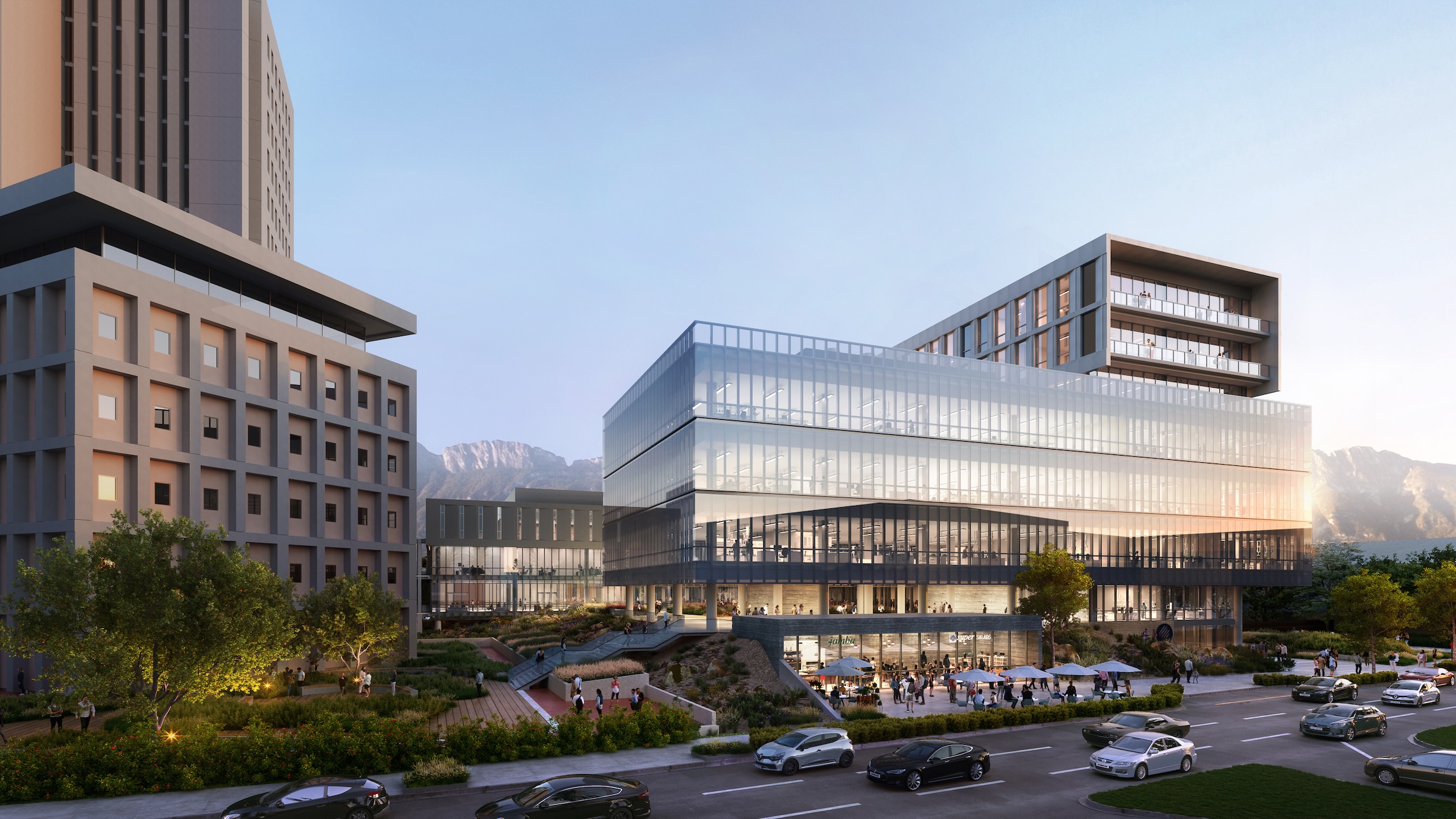The design and construction contract for what is envisioned to be “the premier private academic health center in Mexico and Latin America” was recently awarded to The Beck Group. The TecSalud Health Sciences Campus will be located at Tec De Monterrey’s flagship healthcare facility, Zambrano Hellion Hospital, in Monterrey, Mexico.
One of Mexico’s biggest construction projects, TecSalud will include two buildings covering 322,900 sf. The structures will house more than 30 classrooms and 12 laboratories. Plans also call for new simulation labs for the medical education program. The design will include flexible spaces that can be quickly adapted to differing needs of the healthcare industry.
Positioning the medical school near the Zambrano Hellion Hospital, which will be expanded, and new research facilities, will play a vital role in positioning the campus as a leader in healthcare education and delivery. It will further elevate Tec de Monterrey’s reputation as one of the world’s leading academic centers, according to The Beck Group. Three distinct groups—students, doctors, and researchers—will work within the same environment to tackle shared challenges and devise solutions.
Design is underway, and construction will begin next year. Completion is targeted for the summer of 2027.
Beck previously designed multiple projects at the Monterrey campus, including the Wellness Center and Banorte Stadium. The firm also designed and built the university’s academic buildings and library at the Mexico City campus.
Owner and/or developer: Tecnológico de Monterrey
Design architect: The Beck Group
Architect of record: The Beck Group
MEP engineer: Not yet selected
Structural engineer: Not yet selected
General contractor/construction manager: The Beck Group
Related Stories
| May 1, 2014
Super BIM: 7 award-winning BIM/VDC-driven projects
Thom Mayne's Perot Museum of Nature and Science and Anaheim's new intermodal center are among the 2014 AIA TAP BIM Award winners.
| Apr 29, 2014
USGBC launches real-time green building data dashboard
The online data visualization resource highlights green building data for each state and Washington, D.C.
| Apr 16, 2014
Upgrading windows: repair, refurbish, or retrofit [AIA course]
Building Teams must focus on a number of key decisions in order to arrive at the optimal solution: repair the windows in place, remove and refurbish them, or opt for full replacement.
| Apr 9, 2014
How patient-centered medical homes can help healthcare providers and patients
Beyond reducing the number of uninsured Americans, the Affordable Care Act is driving new types of healthcare facilities, especially patient-centered medical homes.
| Apr 9, 2014
Steel decks: 11 tips for their proper use | BD+C
Building Teams have been using steel decks with proven success for 75 years. Building Design+Construction consulted with technical experts from the Steel Deck Institute and the deck manufacturing industry for their advice on how best to use steel decking.
| Apr 2, 2014
The new model of healthcare facility management
A growing number of healthcare organizations are moving to an integrated real estate model in an effort to better manage costs, respond to regulatory requirements, and support changes in patient care delivery.
| Apr 2, 2014
8 tips for avoiding thermal bridges in window applications
Aligning thermal breaks and applying air barriers are among the top design and installation tricks recommended by building enclosure experts.
| Mar 26, 2014
Callison launches sustainable design tool with 84 proven strategies
Hybrid ventilation, nighttime cooling, and fuel cell technology are among the dozens of sustainable design techniques profiled by Callison on its new website, Matrix.Callison.com.
Sponsored | | Mar 25, 2014
Johns Hopkins chooses SLENDERWALL for a critical medical facility reconstruction
After decades of wear, the hand-laid brick envelope of the Johns Hopkins nine-story Nelson/Harvey inpatient facility began failing. SLENDERWALL met the requirements for renovation.
| Mar 20, 2014
Common EIFS failures, and how to prevent them
Poor workmanship, impact damage, building movement, and incompatible or unsound substrate are among the major culprits of EIFS problems.
















